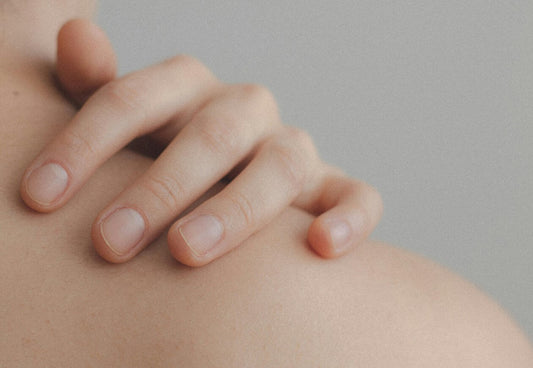
Skin and Celiac Disease
Share
Skin and Celiac Disease: Dermatitis Herpetiformis – When Gluten Appears on the Skin
When most people think about celiac disease, they imagine digestive issues: bloating, diarrhea, abdominal pain, or nutrient deficiencies. But celiac disease can also affect the skin. One of its lesser-known but very visible forms is Dermatitis Herpetiformis (DH). For many, this is the first sign that something is wrong with gluten.
What is Dermatitis Herpetiformis?
Dermatitis Herpetiformis is the skin manifestation of celiac disease. It usually appears on the elbows, knees, buttocks, or lower back as small, itchy, blistering rashes that often leave scars.
Despite the name, it has nothing to do with the herpes virus. The condition was named because the blisters resemble those caused by certain herpes infections.
The trigger is the same as with intestinal celiac disease: gluten (a protein found in wheat, barley, and rye). In DH, the immune system reacts to gluten and attacks the skin, leading to inflammation and painful itching.
Diagnosis
DH is usually diagnosed with a skin biopsy and direct immunofluorescence. If confirmed, it automatically means the person has celiac disease, even if they don’t show typical digestive symptoms. Interestingly, Dermatitis Herpetiformis often appears before celiac disease is formally diagnosed.
Who can get it?
The condition is most common in young adults, but it can affect both children and older people as well. Men and women are equally at risk.
Treatment
There are two main steps in managing DH:
-
Short-term relief: Doctors often prescribe dapsone, which quickly reduces itching and skin lesions.
-
Long-term treatment: Only a strict, lifelong gluten-free diet will keep symptoms under control and prevent flare-ups.
After two or more years on a gluten-free diet, most people become completely symptom-free. Occasional flare-ups usually signal accidental gluten exposure or cross-contamination.
Daily Tips to Relieve Symptoms
In addition to diet, lifestyle habits can help manage flare-ups:
-
Wear cotton clothes to avoid skin irritation.
-
Choose looser, more breathable clothing to reduce friction.
-
Avoid direct sun exposure during peak hours.
-
Shower with lukewarm water instead of hot water.
-
Dry your skin gently (patting, not rubbing).
-
Use fragrance-free, dye-free moisturizers – natural oils like almond, argan, or rosehip oil often help.
What does the skin tell us?
Dermatitis Herpetiformis can be painful and challenging, but it’s also a powerful signal from the body: gluten is harmful. While the transition to a gluten-free diet can feel overwhelming at first, long-term it restores not only skin health but overall well-being.



